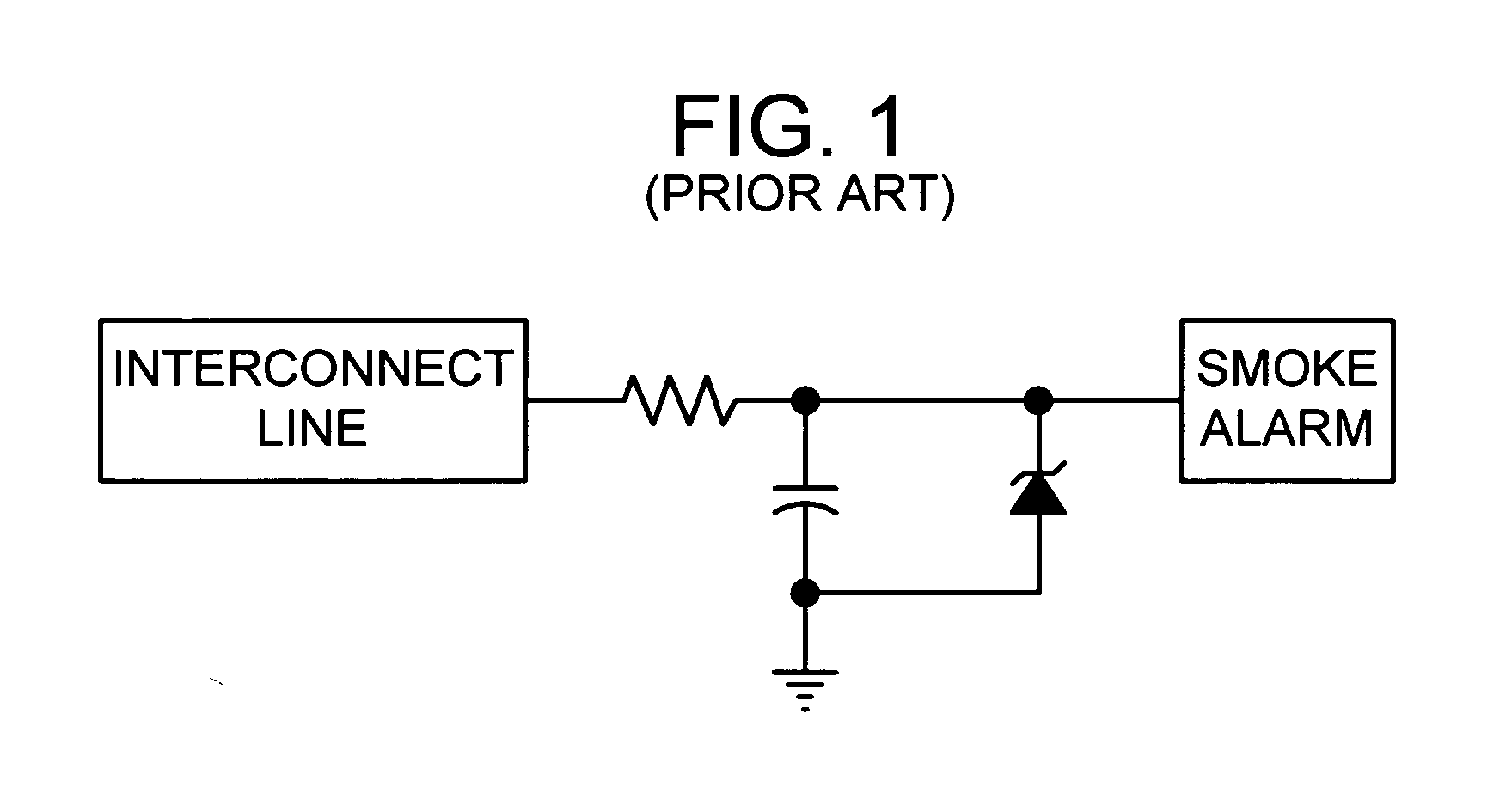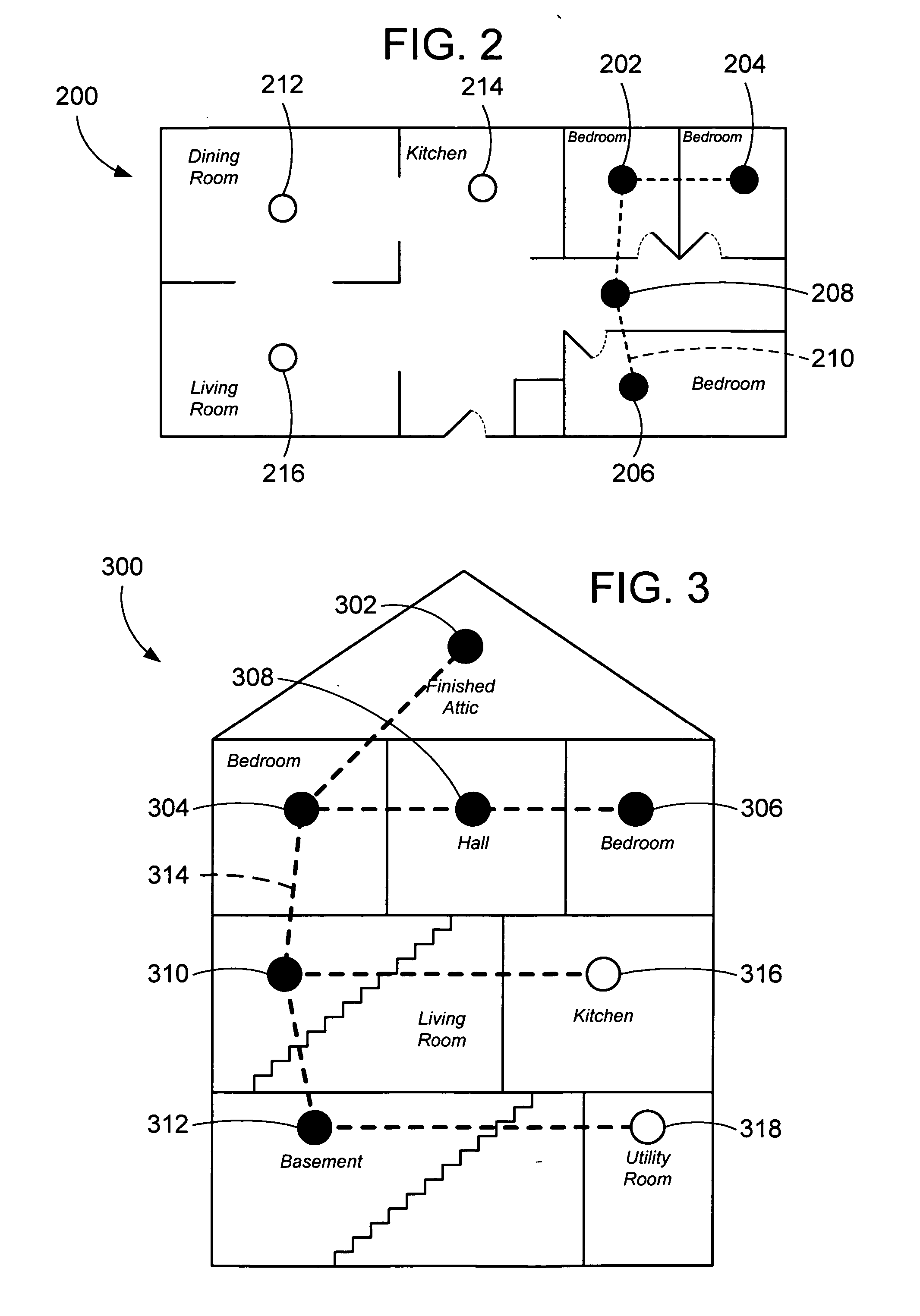Circuit and method for prioritization of hazardous condition messages for interconnected hazardous condition detectors
a hazardous condition and message technology, applied in the field of interconnected hazardous condition detector systems, can solve problems such as continuing to sound alarms, and achieve the effect of easy and safe identification of the location
- Summary
- Abstract
- Description
- Claims
- Application Information
AI Technical Summary
Benefits of technology
Problems solved by technology
Method used
Image
Examples
Embodiment Construction
[0031] Because every additional second of notice that an occupant has of the existence of a hazardous condition increases the occupants' chance of escaping danger, the use of multiple hazardous condition detectors throughout a dwelling or other structure is highly desirable as discussed above. Indeed, complete coverage protection is achieved by installing an appropriate hazardous condition detector in every room of a dwelling. Smoke detectors should be installed in accordance with the National Fire Protection Associations Standard 72 (National Fire Protection Association, Battery March Park, Quincy, Mass. 02269). The NFPA standard identifies the minimum requirement for locating smoke alarms in family living units. It states: “2-2.1.1.1 smoke alarms shall be installed outside of each separate sleeping area in the immediate vicinity of the bedrooms and on each additional story of the family living unit including basements and excluding crawl spaces and unfinished attics. In new constr...
PUM
 Login to View More
Login to View More Abstract
Description
Claims
Application Information
 Login to View More
Login to View More - R&D
- Intellectual Property
- Life Sciences
- Materials
- Tech Scout
- Unparalleled Data Quality
- Higher Quality Content
- 60% Fewer Hallucinations
Browse by: Latest US Patents, China's latest patents, Technical Efficacy Thesaurus, Application Domain, Technology Topic, Popular Technical Reports.
© 2025 PatSnap. All rights reserved.Legal|Privacy policy|Modern Slavery Act Transparency Statement|Sitemap|About US| Contact US: help@patsnap.com



